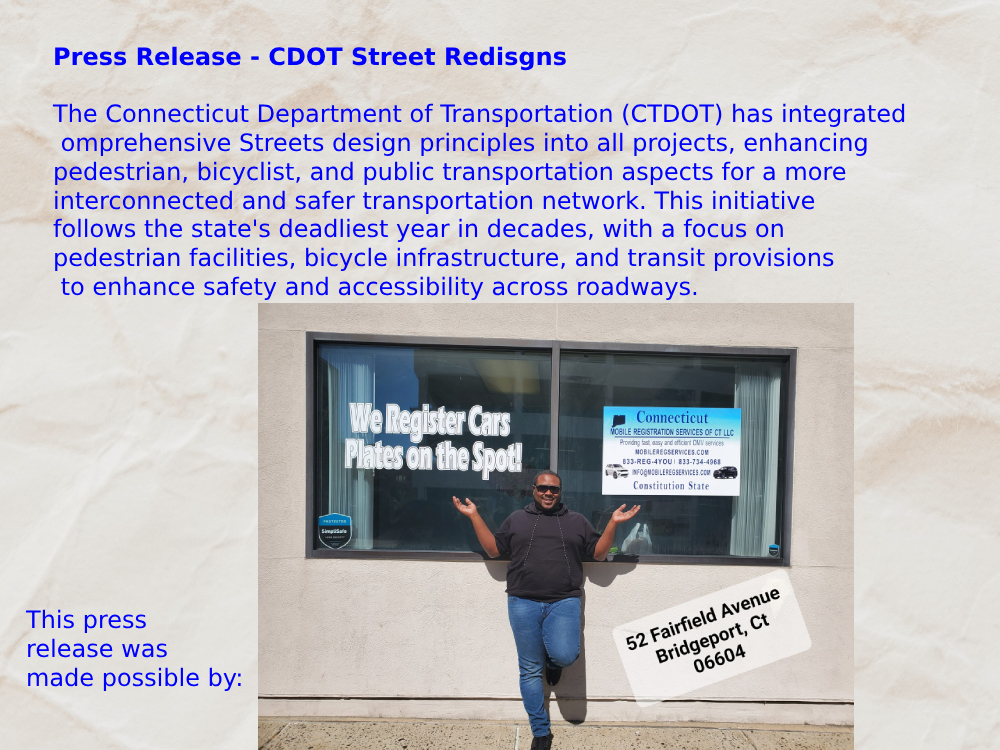The Connecticut Department of Transportation (CTDOT) has implemented new Complete Streets design criteria to be incorporated into all projects. The Complete Streets design criteria is an expansion of CTDOT’s Complete Street Policy, ensuring that every project includes a focus on pedestrian and bicyclist facilities and public transportation operations to create stronger intermodal transportation networks and improve safety. Complete Streets Policies are aimed at creating roadways that work for everyone. By ensuring the needs of pedestrians, bicyclists, motorists, and transit customers of all ages and abilities, safety is improved, and a stronger transportation network is created. “While this change may sound technical, it is a big deal for improving the safety of our transportation network. I am incredibly proud of our Bureaus of Engineering and Construction and Policy and Planning for tackling the challenge I posed to them and developing these new Complete Streets design criteria for all of our future projects,” said Connecticut Department of Transportation Commissioner Garrett Eucalitto. “We are doing everything we can break down barriers to transportation and make Connecticut roadways more accessible for everyone.” “Utilizing Complete Streets design criteria is just one of the many ways we’re working to make Connecticut safer for all roadway users,” said Connecticut Department of Transportation Chief Engineer and Bureau Chief of Engineering and Construction Scott Hill. “This change will solidify and ensure that pedestrian, bicyclist, and motorist safety is incorporated into the billions of dollars worth of projects we have planned in our Capital Program.” 2022 was the deadliest year on Connecticut roadways in decades, with more than 360 fatalities, including more than 70 pedestrian deaths. The new CTDOT Complete Streets Design criteria focuses on three areas to improve safety and mobility: Pedestrian facilities – includes sidewalks, shared use paths, or side paths on both sides of the roadway. Bicycle facilities – includes paved outside shoulders, bike lanes, separated bike paths, or shared use paths on both sides of the roadway. Transit provisions – includes crosswalks, shelters, benches, and other ways to make existing or proposed transit stops more accessible. If any CTDOT project does not meet these three criteria, a formal design exemption and approval is required by the CTDOT Chief Engineer. The new design criteria can be viewed here. The new design criteria is part of a larger CTDOT strategy to improve safety and mobility, and reduce roadway crashes and injuries. For more information on CTDOT Complete Streets, visit ct.gov/dot

